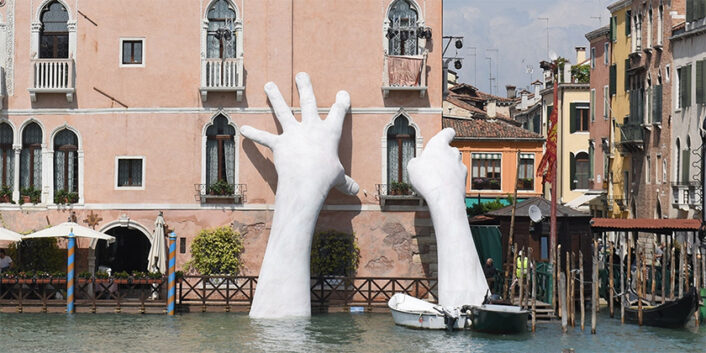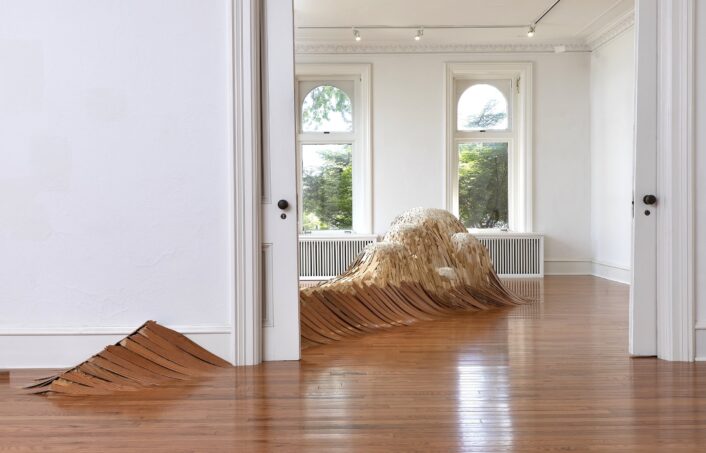Culture
Andrew Ramiro Tirado’s Hands
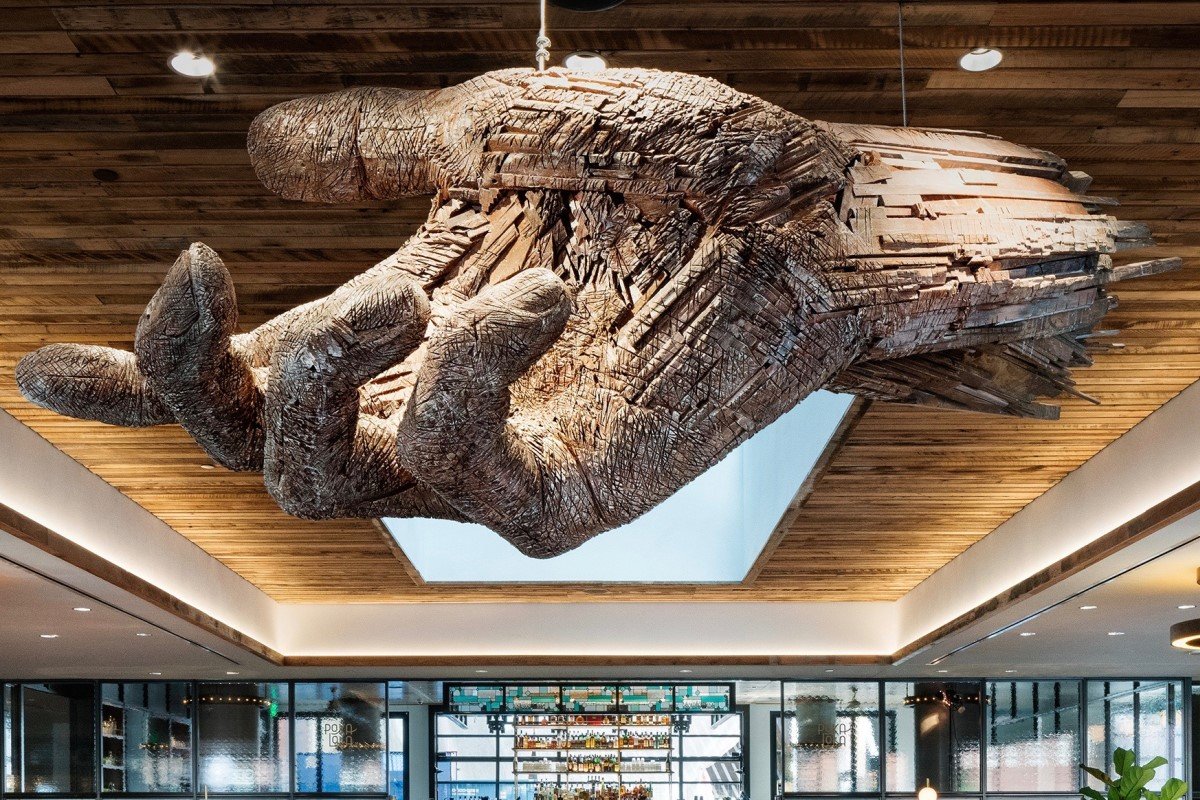
“The Quantifiable and the Ineffable” at The Maven hotel.
Image courtesy of: Andrew Tirado
For several years now, Andrew Ramiro Tirado has been creating eye-catching sculptures. In particular, it is hands that Tirado focuses on and emulates. The Colorado-born and based artist only transitioned to “artist” ten years ago. At the start of his career, Tirado was a studio assistant for the painter, Chuck Close. Following that three year stint, the artist moved back to his home state where he mainly worked in the “wood business.” Tirado was involved in a number of different operations from building wood-strip canoes to making custom props, set, and displays to custom cabinetry.
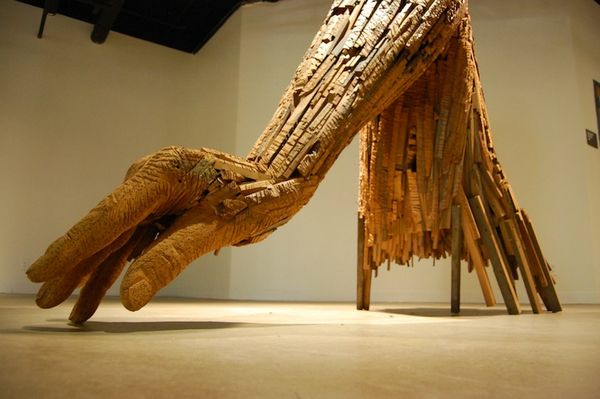
From 2014, giant hands made from reclaimed wood.
Image courtesy of: Trend Hunter
In 2012, Tirado began exhibiting his unique work; initially at a number of group shows and then, as a solo artist. However it was his solo exhibit at the Colorado Springs Fine Arts Center in 2014 that garnered the artist international acclaim. Tirado’s “Lacuna” received two distinctive honors at the 16th annual Art on the Street Exhibit in Colorado Springs: the Juror’s Choice Award and the Peoples’ Choice Award.
In 2016, Andrew became a “full-time artist;” the initial presentation of his work happened when he helped on an exhibit at the Venice Biennale of Architecture’s 15th annual international architecture exhibition. Recently, the artist moved to a new art studio that allows him to produce his largest creations. Currently, Tirado is working on his largest project, a public art project for the city of Tulsa. Slowly but surely, Tirado’s appeal has grown and he has been approached by many fans for personalized, commissioned 2-D and 3-D works.
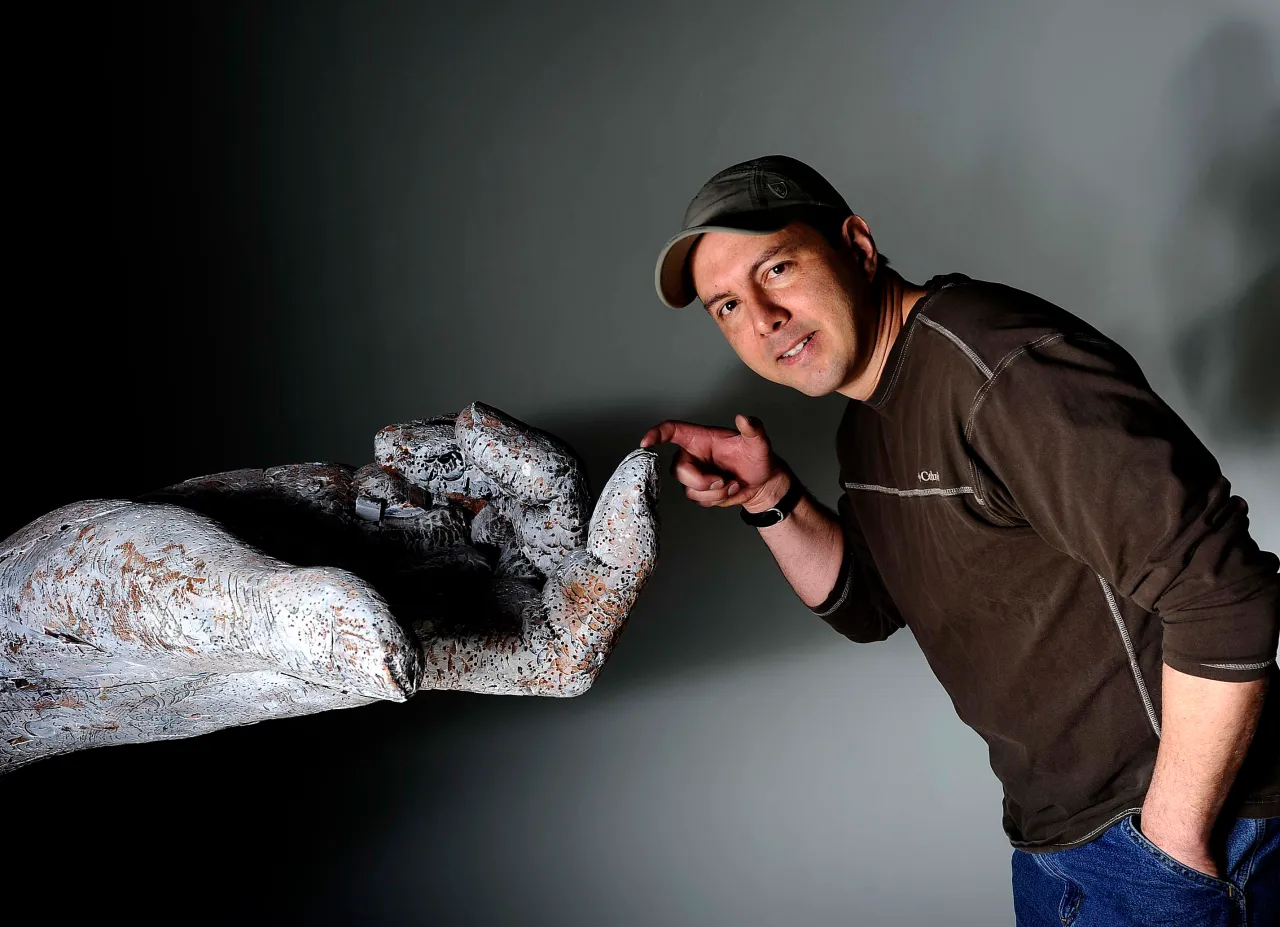
The artist and one of his hands.
Image courtesy of: Colorado College
Tirado’s work begins in his mind as a mental drawing. Courtesy of his web site, “The drawing serves as an armature which supports the transformation into a physical object. The mental becomes physical when his drawing takes three-dimensional form via a deceivingly random combining of linear elements which do not immediately reveal the eventual.” As the project moves from abstract to reality, Tirado does a good job of maintaining the original idea while using only raw materials. The importance of raw materials lies in that they beautifully maintain their natural character.
In keeping with the work drawings of Renaissance masters, “the thought process is not hidden.” Tirado’s expertise and skillfulness is evident through his hands. His “vision, expertise, and expression” is perfectly reflected in the surfaces he molds. Tirado says he draws a lot of his inspiration and artistry from the master woodworker George Nakashima, a leading innovator of 20th-century, wooden furniture design.
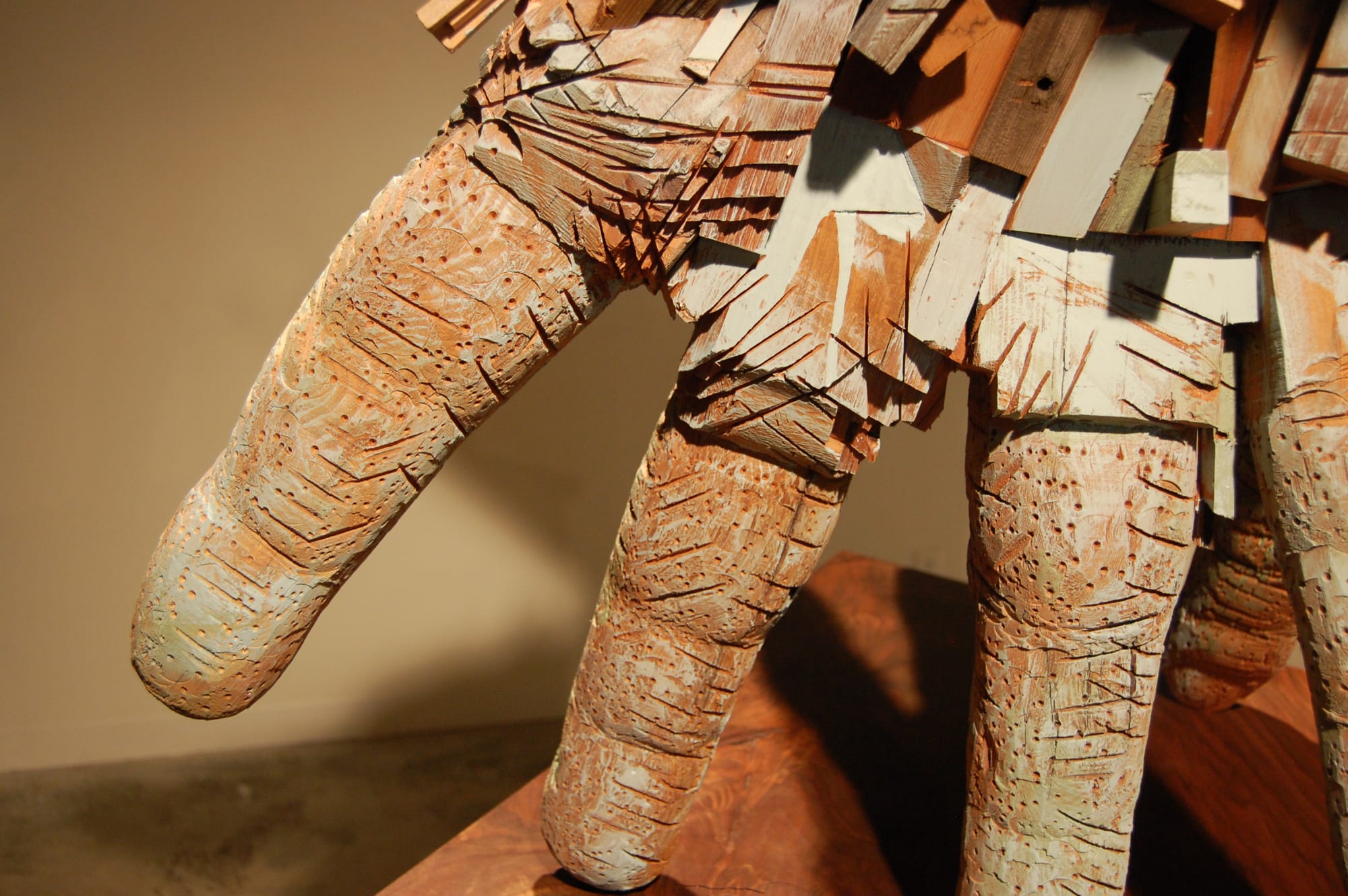
4-foot tall pair of hands chiseled from reclaimed wood, on a walnut base.
Image courtesy of: Wescover
Tirado’s first “hand” was initially proposed as a chair contoured in the shape of a hand. The evolution from mind to reality is part of the excitement; the artist states to the Colorado College web site, “It’s fun not knowing where it will end up. With client work, you know exactly how it will end up. There’s not the same creativity and sense of freedom I have now.”
Pieces of the hands are essentially little paintings and abstract forms that come together to form a large piece. Each finger is individually carved from a large piece of wood. The uniqueness of Tirado’s surfaces can be traced back to the fact that his carving technique uses only a drill and forester bits.

Open hands, traditionally, are a pronunciation of strength and courage; and hands are a way for our hearts and minds to literally capture the world.
Image courtesy of: Peak, photographed by: Andrew Bordwin
Our favorite installion is “The Quantifiable and the Ineffable” which is suspended from The Maven hotel’s lobby ceiling. Tirado’s work at the Denver institution is literally saying, “Welcome.” The piece weighs more than 500 pounds and is made from reclaimed docking wood. In order to get it installed, a U-Haul and a forklift were needed. The amazing focal point is artwork that can be seen as a celebration of “all things artisanal!”

